Direct Use of Geothermal Energy
Lead Organisation: Geo-Future GmbH, Switzerland
Working Group Leader: Katharina Link
Status: Closed – 27 April 2022
Participants: France, Germany, Iceland, Japan, New Zealand, Norway, Republic of Korea, Spanish Geothermal Technology Platform, Switzerland, United Kingdom, United States
Geothermal water has been used for millennia for various applications. During the last few decades, the use of geothermal energy for heating purposes has become more and more important worldwide, and the number of applications has increased dramatically. Many applications, which require heat up to a specific temperature, can use geothermal energy, such as: heating buildings, raising plants in greenhouses, drying crops, fish farming, snow melting, bathing, heat for therapeutic purposes, and heat for industrial processes. Currently cooling by geothermal energy is becoming important.
In 2012, four of five WG 8 Tasks were successfully completed and in the spring of 2013 WG 8 was restructured with a mission to provide sound unbiased information, with clear communication facilitating knowledge transfer, enhancing direct geothermal energy use deployment .
WG 8 provides an international platform for knowledge exchange and cooperation with WG 8 members regularly meeting to share advances and ideas. Industry and research organizations / laboratories of member and non-member countries interested in participating are welcome to be involved in the WG.
Publications, and presentations from the working group’s workshops, can be found through this link.
Task A- New and Innovative Geothermal Direct Use Applications
Geothermal direct use technologies are mature and in general competitive in a number of established markets. Innovative applications to open up new possibilities for utilization, to enhance efficiency, and to reduce costs are explored. These include projects such as “smart city thermal networks” and geothermal energy in combination with of energy sources, such as solar. In the agricultural sector there is significant potential for new and innovative direct use applications. Workshops and symposia were the main focus of Task A activity in the period 2015 to 2022. The presentations are available through this link (URL to workshop presentations)
Task B- Communication
Although the worldwide technical and economic potential of geothermal direct use applications is enormous, knowledge of it by the public, politicians and decision-makers is relatively lacking; though the level of awareness does vary widely from country to country. For instance in some countries the potential of geothermal heat pump systems for heating residential and district wide heating schemes is well known, but the fact that there are many other applications is less widely known. Communication is an essential tool to foster geothermal direct use, advancing deployment.
Task C – Guidelines for Geothermal Energy Statistics – Completed.
Task C was completed in 2017 following GEOSTAT activity funded through the Geothermal ERA-NET which developed from the 2015 publication Ketilsson, J., Sigurðsson, T., Bragadóttir, E.R., International Collection of Geothermal Energy Statistics – Towards reducing fragmentation and improving consistency, Orkustofnun, February 2015 (2015) ISBN: 978-9979-68-351-3. [Publication]
Task D- Statistics for Geothermal Heat Pump Applications – Completed.
This Task was completed in 2021 with the publishing of the paper in the proceedings of the World Geothermal Congress 2020+1 [Paper] and with the presentation of the paper at the congress [Video].
Task E- Design Configuration and Engineering Standards.
The Scope of Task E is to collect, characterize and exchange standardized designs and practices for various applications, with the goal of minimizing the engineering related to various applications. Task E also includes documentation assembling listings of national and international standards (norms), engineering practices and other relevant documents.
Task F – Costs of Geothermal Heat Pump Applications.
Task F was collecting cost data on geothermal heat pump installations in various nations across the globe.
Task G – Geothermal Heat Pump Monitoring.
Task G was set up to work with Annex 52 in the IEA HPT Technical Collaboration Programme. The final report is available from the HPT website [Final report]
